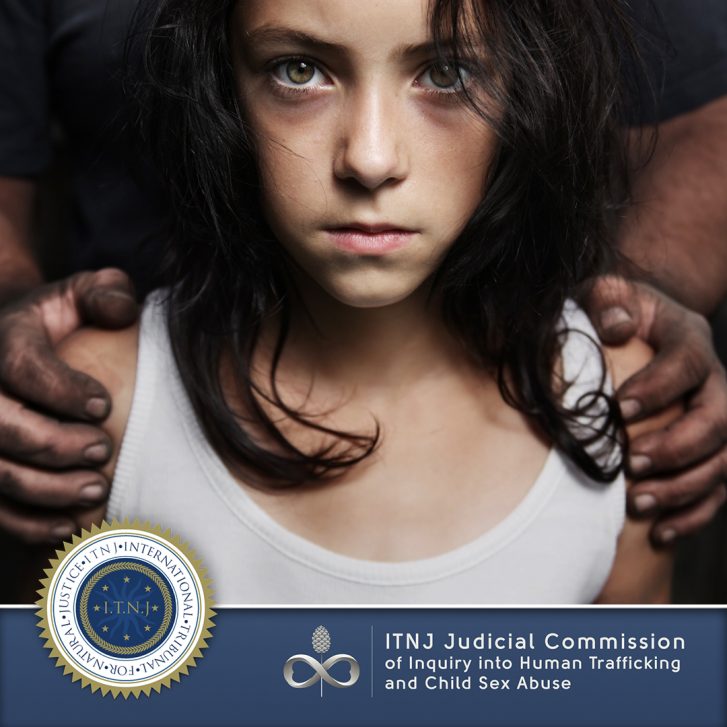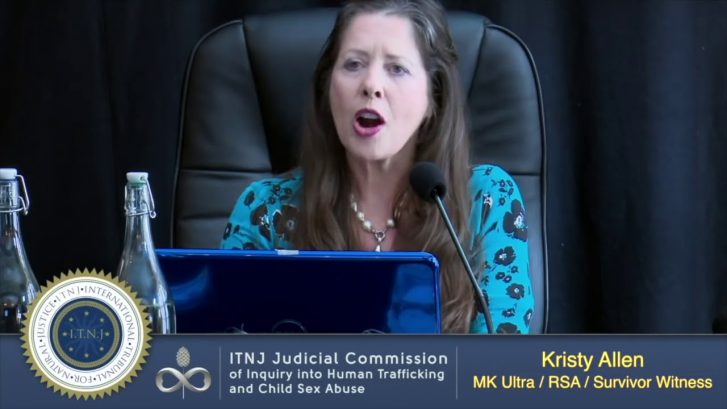New Earth communities and complexes are planetary exemplars of harmonious, peaceful and joyful coexistence between conscious human beings and the natural kingdoms; a global model for stewardship where communities satisfy both human needs and those of indigenous flora and fauna.
Conservation Vision
New Earth locations are recognized across the world as true Earth Sanctuaries where the rich biodiversity of the world is protected and provided with the ideal conditions to flourish. This vision was made possible as a result of careful planning, development and the operationalizing of advanced holistic communities, retreats and institutes.
New Earth has successfully integrated the best known practices that address all potential causes of  adverse development related impact. In the spirit of global responsibility, New Earth has left a legacy through which to ensure that all nearby regional landscapes and worldwide ecosystem resilience has been positively impacted. This legacy also included continuous educational support to all community inhabitants from the New Earth Institutes thus ensuring that any newly emerging conscious practices were immediately adapted into daily community life.
adverse development related impact. In the spirit of global responsibility, New Earth has left a legacy through which to ensure that all nearby regional landscapes and worldwide ecosystem resilience has been positively impacted. This legacy also included continuous educational support to all community inhabitants from the New Earth Institutes thus ensuring that any newly emerging conscious practices were immediately adapted into daily community life.
The depth of biodiversity present at every New Earth venue, including the vast networks of protected lands donated by conscious individuals, are the global guarantee for prosperity and abundance for many generations to come.
Context
The dominant paradigm of the old-world-order is one in which human beings, by being the dominant species on earth, have greater rights to existence than all other species. This corrupt version of reality also provided the human race with the self-appointed right to control all resources in the world, ensuring eventual dominion over all life.
 Fauna, flora and entire ecosystems have become a monopolized commodity, with environmental destruction and the resultant loss of biodiversity considered to be nothing but a simple externality; the necessary cost of progress. The old-order’s materialistic, fragmented and self-centered approach has resulted in the degradation, fragmentation and depletion of habitats, the accelerated loss of biodiversity, and the pollution of all physical forms and of the world itself[1]. Due to the interdependence of nature, a domino effect begins, setting into motion the accelerated decline of remaining ecosystems and the services they provide.
Fauna, flora and entire ecosystems have become a monopolized commodity, with environmental destruction and the resultant loss of biodiversity considered to be nothing but a simple externality; the necessary cost of progress. The old-order’s materialistic, fragmented and self-centered approach has resulted in the degradation, fragmentation and depletion of habitats, the accelerated loss of biodiversity, and the pollution of all physical forms and of the world itself[1]. Due to the interdependence of nature, a domino effect begins, setting into motion the accelerated decline of remaining ecosystems and the services they provide.
Less than 2% of Earth can be considered as not being under the control of man (i.e. without any type of infrastructure).
Neither the 2010 biodiversity CBD’s target, nor any of the sub-targets of significantly reducing the rate of biodiversity loss by 2010 were met globally. Neither the biodiversity losses, nor the pressure on biodiversity show any signs of reduction; far from that, they continue to increase and biodiversity worldwide is declining at an alarming rate, as species in all groups, whose trends are known, are being driven closer to extinction (CBD, 2010; UNEP, 2009). “Most direct drivers of degradation are currently staying constant or growing in intensity”[2] (UNEP, 2009, p. 14). “There is a high risk of dramatic biodiversity loss and accompanying degradation of a broad range of ecosystem services if ecosystems are pushed beyond certain thresholds or tipping points” (CBD, 2010, p. 10). Humans are causing the largest mass extinction on earth since the extinction of the dinosaurs. Previous mass extinctions were due to  natural causes, but this extinction is man-driven and it is only man who can do anything about it. This begins by acknowledging and taking responsibility of his actions, and for the impact these actions have on all the Earth and the creatures that inhabit it.
natural causes, but this extinction is man-driven and it is only man who can do anything about it. This begins by acknowledging and taking responsibility of his actions, and for the impact these actions have on all the Earth and the creatures that inhabit it.
If this trend continues, the biosphere will be so impoverished that it will take Earth above five million years to recover an equivalent degree of biodiversity to that which it had before man’s industrial revolution (Myers, 1993). According to the global Living Planet Index (LPI), since 1970, biodiversity has declined worldwide by 30%, reaching in tropical climates up to 60% (CBD, 2010). Biodiversity is lost up to and approximately 1,000 times the natural rate, and only over the last 50 years, 15 out of 24 ecosystem  services have been degraded and exploited; it is certain ecosystems services worldwide are also in decline (Lenzen et al., 2012, Worldwatch Institute, 2012, Ramirez, 2011, MEA, 2005). If genetic and species diversity is “… allowed to become extinct, options for future survival and adaptation are being closed down forever” (CBD, 2010 p. 52), resulting in the heart-breaking enfeeblement of the world.
services have been degraded and exploited; it is certain ecosystems services worldwide are also in decline (Lenzen et al., 2012, Worldwatch Institute, 2012, Ramirez, 2011, MEA, 2005). If genetic and species diversity is “… allowed to become extinct, options for future survival and adaptation are being closed down forever” (CBD, 2010 p. 52), resulting in the heart-breaking enfeeblement of the world.
“Biodiversity is the basis for evolution and adaptation to changing environments, making it essential for survival of life” (IAIA, 2005, p. 2). Everything changes, everything evolves, the world evolves, species evolve, and human beings evolve, following natural adjustments that occur gradually over time. Less complex species (e.g., virus, bacteria, insects) adjust to the environmental changes faster, and evolve faster than more complex species (e.g., amphibian, mammals, humans). Humans have caused so much change, in such an alarmingly short time. The immensity of this change is so vast and varied that the biodiversity and ecosystem losses are resulting in global changes whose inextricable interactions have the potential of changing the biosphere in cataclysmically unexpected ways.
If we do not reverse this trend, future generations will be forced to live in a frail world entangled in a web of scarcity. The bountiful world as we knew it will become but a distant memory.
Rationale
- All nature kingdoms have the same right of existence as human beings do.
- Healthy human beings and societies, as well as the abundance in their lives, is dependent on all of nature’s kingdoms, their health and abundance, and in the balance of the natural world (i.e. perfect interactions and harmonious changes within the whole).
- If biodiversity and ecosystems functions and processes (which depend upon biodiversity) are lost,
 the possibilities for long term survival of the human species diminish at the same level as these losses.
the possibilities for long term survival of the human species diminish at the same level as these losses.
- All beings, all aspects of the universe, play a crucial role in the intricate web of life. It is not because human beings have lost their connection with these, that interactions within the whole cease to exist or operate. Separation between species, habitats, all nature and human beings is an illusion in absolute and relative terms.
- Sustainability[3] at its base, rests on the conservation of biodiversity worldwide, not solely on the wise use of environmental resources used to satisfy humankind’s desires and needs. Sustainability entails the protection of Earth’s natural capital by limiting the use of resources to what the Earth has the capacity to renew periodically. It is by preserving its capital, and restricting consumption to the surplus, that life and its process will be preserved for years to come.
- Full spectrum sustainability in alignment with the United Nations Millennium Development Goals requires the implementation of appropriate process that will assure that NEP will not cause environmental losses that will further exacerbate biodiversity and ecosystem’s decline at a local, regional and global scale.
IBCP’s Principles
- Integrity and transparency. New Earth developments are designed in alignment with New Earth values and principles. The design and implementation of IBCP and any of its components (e.g. offsets, training) and communication of its results should be undertaken transparently with the utmost integrity.
- No-net-loss. New Earth ensures that all potential adverse impacts are addressed and will result
 either in no-net-loss or preferably in a net gain of biodiversity, by adhering to the mitigation hierarchy (i.e. avoid, minimize, mitigate, offset).
either in no-net-loss or preferably in a net gain of biodiversity, by adhering to the mitigation hierarchy (i.e. avoid, minimize, mitigate, offset).
- Long-term results. All components of the IBCP are based on an adaptive management approach so as to deal with an ecosystems’ dynamic nature. This includes the integration of monitoring and evaluation activities to assure results in the long term or in perpetuity.
- Life Cycle and Ecosystem Approaches. Decision making and the evaluation of environmental impacts adhere to a life cycle approach[4] and adopt an ecosystem perspective.
- Precautionary Approach. The precautionary principle is applied to any situation where biodiversity might be threatened and when there is insufficient knowledge to either qualify risks or implement effective mitigation.
- Outcomes. The design and implementation of IBCP should translate to the achievement of conservation outcomes above to what would have occurred if New Earth participants wouldn’t have entered/altered a site. The site’s natural conditions should never worsen due to impacts by New Earth developments throughout their lifecycle. Ideally there will be significant improvement soon after development has completed with definite increases in environmental quality occurring over time. New Earth will also ensure that developments do not generate any leakages.[5]
- Participatory and equalitarian approach. New Earth is an initiative for the people of the world by the people of the world, thence as appropriate to each IBCP’s component, key stakeholders will be encouraged to participate in New Earth’s conservation initiatives (e.g., communities’ inhabitants, local experts, local indigenous communities), and rights and responsibilities will be shared in a balanced, equitable and fair manner among all stakeholders involved. This equitable sharing is the foundation for fostering long lasting partnerships centered upon an attitude of goodwill towards all life.
- Scientific and pragmatic approach. IBCP follows a scientific approach and integrates best
 known practices worldwide in a holistic way that best serves both humankind and nature, in consideration that these are interdependent.
known practices worldwide in a holistic way that best serves both humankind and nature, in consideration that these are interdependent.
- Rigor. IBCP is an informed and documented process that integrates science, best practices, and sound decision making. This includes a cycle of continuous improvement in its main model. IBCP employs accurate, appropriate, and multidisciplinary approaches.
- Ancestral knowledge. When available, IBCP’s processes are informed by traditional ecological knowledge of local communities (e.g., First Nations, indigenous populations).
Conservation Long term goals
- To ensure that New Earth developments result in zero gross negative impact on listed species (e.g., at risk, endangered, threatened, vulnerable, special concern) throughout their entire life cycle.
- To ensure zero-net-losses (i.e., not-net-losses) of environmental values (e.g., species, habitats) caused by project development and community/retreat/institute operations (e.g., accidental take of species, overexploitation of local resources, grabbing of protected areas within the land, negative impacts of change in land cover).
- To ensure the conservation of the three levels of biological diversity (ecosystems, species and
 genes[6]) and related systems[7] (process, structures, and functions) at New Earth sites while considering site location and condition, overall regional landscape, type, state and status of the local ecosystems, the number and status of species present, their requirements at a site and landscape level, as well as potential opportunities to increase ecosystems’ resilience at a larger scale (e.g. green corridors, protected areas, buffer zones), and any other current conservation challenges or issues (e.g. invasive species).
genes[6]) and related systems[7] (process, structures, and functions) at New Earth sites while considering site location and condition, overall regional landscape, type, state and status of the local ecosystems, the number and status of species present, their requirements at a site and landscape level, as well as potential opportunities to increase ecosystems’ resilience at a larger scale (e.g. green corridors, protected areas, buffer zones), and any other current conservation challenges or issues (e.g. invasive species).
- To ensure the restoration of the natural environments, where these have previously been destroyed, degraded and impoverished (e.g., agricultural land, deforested land, decertified land), at New Earth sites, in consideration of the overall regional landscape, current conservation challenges, and the factors having the potential to increase ecological resilience.
- To ensure zero-net-losses and consistent conservation gains over time at New Earth sites through the support directly provided by New Earth Institutes, aimed at guiding communities in areas such as resources management, species management, introduction and removal of species, management of alien invasive species, permaculture and biodiversity conservation alignment, and for the implementation of effective community-based participatory management.
- To ensure net and measurable contributions to the local and global state of the environment as a result of the increasing number of New Earth Communities and complexes in tandem with New Earth protected areas and sites worldwide.
Organizational conservation related objectives
- To raise the profile of the New Earth Sanctuary by integrating exemplar biodiversity protection and management.
- To raise the profile of retreats as privileged eco-tourism destinations, where natural environments are preserved and indigenous wildlife/flora are present.
- To strengthen public image – focusing upon attraction rather than promotion.
- To ensure the genetic diversity necessary to secure the provision of natural resources (e.g., food,
 medicinal plants) to communities.
medicinal plants) to communities.
- To ensure the resilience of ecosystems that provides residents a high quality of life.
- To further raise New Earth’s investment profile, as socially and environmentally responsible.
- To increase synergistic cumulative positive impacts that NEP brings to the world.
[1] From domestic parasites to hormonal changes and cancer, these conditions are not exclusive to human, and human-made environments, they are equally present in nature, and the effects of anthropogenic pollution, have been seen in wildlife, long before they were seen in man (hormonal and gender changes in frogs, birds poisoned by mercury from contaminated spiders, cancer in whales and tortoises; the list is endless).
[2] Among the main anthropogenic drivers of change (UNEP, 2009, CBD 2010, MEA, 2005) are found:
Changes in land use and cover, Habitat loss and degradation,Harvest and resource consumption,  Overexploitation, Habitat change, Climate change, Species introduction or removal, Invasive alien species,Overexploitation and unsustainable use, Excessive nutrient load and other forms of pollution, External inputs (e.g. fertilizer use, pest control, irrigation), Technology adaptation and use, The synergistic and chained effects resulting from the above, plus the interaction of these with natural, physical, and biological drivers (e.g. evolution, volcanos).
Overexploitation, Habitat change, Climate change, Species introduction or removal, Invasive alien species,Overexploitation and unsustainable use, Excessive nutrient load and other forms of pollution, External inputs (e.g. fertilizer use, pest control, irrigation), Technology adaptation and use, The synergistic and chained effects resulting from the above, plus the interaction of these with natural, physical, and biological drivers (e.g. evolution, volcanos).
[3] Sustainability is not limited to eco-efficiency and the use of ‘green technologies’ that pollute less, and result in less waste (e.g. energy power, waste management, water treatments), neither it is limited to the efficient and green production of natural resources aimed at satisfying human needs (e.g. permaculture, high-performance agriculture, organic agriculture, FSC certified forestry).
[4] “A life cycle approach promotes improving entire systems, not single parts of systems, by avoiding decisions that fix one environmental problem but cause another unexpected […] life cycle thinking helps avoid shifting problems from one life cycle stage to another, from one geographic region to another and from one environmental medium (air, water or soil) to another”(UNEP, 2004 p.8).
[5] Displacing harmful activities to other locations.
[6] “In the simplest of terms, biological diversity is the variety of life and its processes; and it includes the variety of living organisms, the genetic differences among them, and the communities and ecosystems in which they occur” (Keystone Center, 1991).
[7] Examples of ecosystem’s services are: pollination, seeds dispersal, drought/floods mitigation, nutrients cycle, erosion protection.
Originally posted @ New Earth Institute








